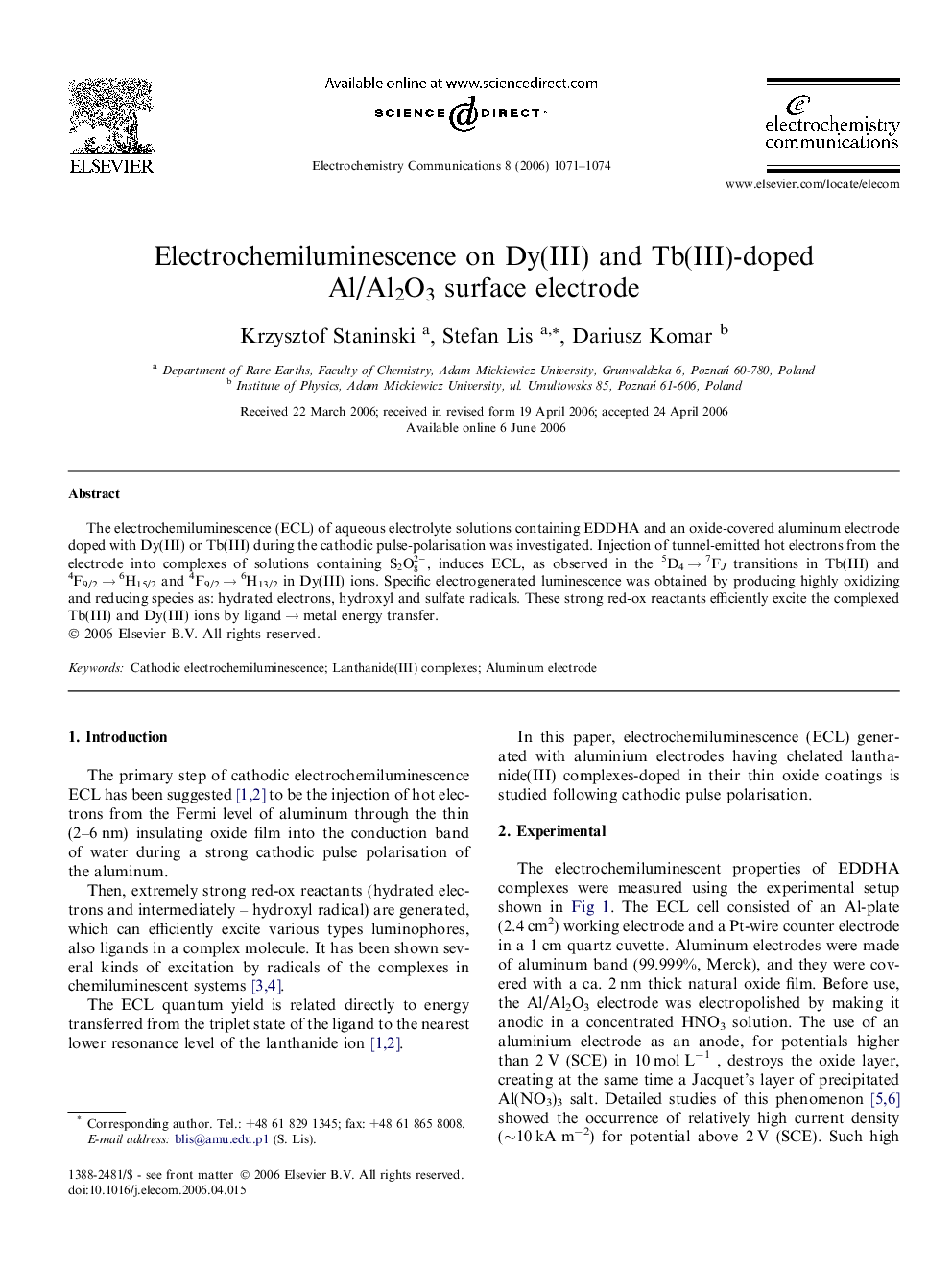| Article ID | Journal | Published Year | Pages | File Type |
|---|---|---|---|---|
| 182735 | Electrochemistry Communications | 2006 | 4 Pages |
Abstract
The electrochemiluminescence (ECL) of aqueous electrolyte solutions containing EDDHA and an oxide-covered aluminum electrode doped with Dy(III) or Tb(III) during the cathodic pulse-polarisation was investigated. Injection of tunnel-emitted hot electrons from the electrode into complexes of solutions containing S2O82-, induces ECL, as observed in the 5D4 → 7FJ transitions in Tb(III) and 4F9/2 → 6H15/2 and 4F9/2 → 6H13/2 in Dy(III) ions. Specific electrogenerated luminescence was obtained by producing highly oxidizing and reducing species as: hydrated electrons, hydroxyl and sulfate radicals. These strong red-ox reactants efficiently excite the complexed Tb(III) and Dy(III) ions by ligand → metal energy transfer.
Related Topics
Physical Sciences and Engineering
Chemical Engineering
Chemical Engineering (General)
Authors
Krzysztof Staninski, Stefan Lis, Dariusz Komar,
